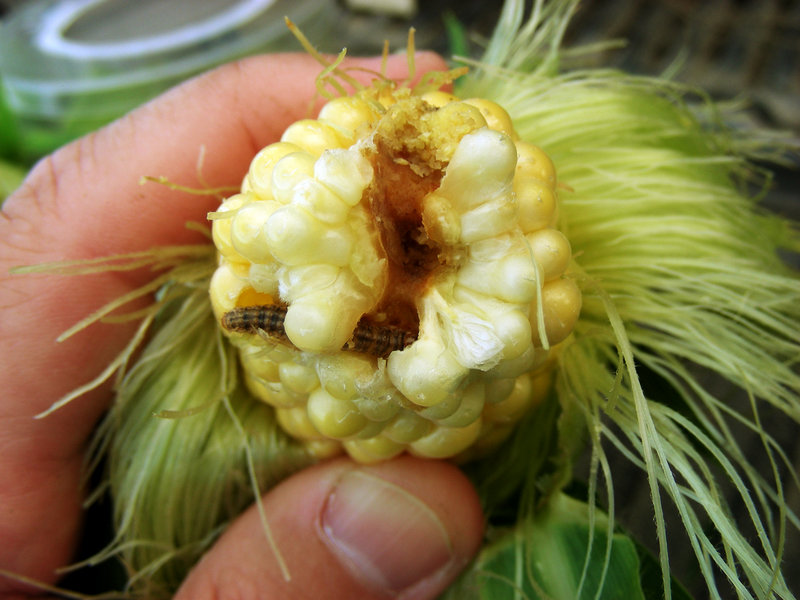MINNEAPOLIS – This corn turns out to be a very good neighbor.
Corn that’s been genetically engineered to resist attacking borers produces a “halo effect” that provides huge benefits to other corn planted nearby, a new study finds. Since the borers that attack the genetically modified crops die, there are fewer of them to go after the non-modified version.
Given that the corn borer has cost U.S. farmers $1 billion a year, the economic benefits are dramatic, according to the report in today’s edition of the journal Science.
The genetically modified plants, called Bt corn, have had an economic benefit of $6.9 billion during the past 14 years in the five Upper Midwest corn-producing states studied, concluded the researchers. They were led by William Hutchison, head of the entomology department at the University of Minnesota, and Paul Mitchell, an agricultural economist at the University of Wisconsin.
They said they were surprised to find that non-Bt corn acres actually reaped 62 percent of the benefit, or $4.3 billion. That’s because of the pest-control effect and because non-Bt seed is cheaper.
“We knew there was a benefit but we didn’t realize it was going to be that high,” Hutchison said in an interview.
An accompanying commentary in Science by entomologist Bruce E. Tabashnik of the University of Arizona calls the study groundbreaking, partly because it’s the first to do an economic analysis on the effect based on large-scale, long-term data.
Bt corn gets its name because it’s engineered to produce a toxin with a gene from the common soil bacterium Bacillus thuringiensis. The toxin kills the European corn borer caterpillar but is considered harmless to people and livestock, so Bt corn has become highly popular since it hit the market in 1996. It’s now planted on about 63 percent of all U.S. corn acres.
Caterpillars of the corn borer moth tunnel into corn stalks and chew on the leaves, cutting yields. Insecticides aren’t very effective against them, Hutchison said. But when the insects munch on Bt corn, they stop eating within minutes and die within a day or two, he said.
To guard against corn borers developing resistance to the toxin, federal regulations require that farmers plant a certain amount of non-Bt corn in “refuges.” Requirements vary, but 20 percent of the corn acres has been typical for a Midwest farm.
The adult corn borer moths lay their eggs randomly on Bt and non-Bt corn. Caterpillars that hatch on the Bt corn die long before they can become moths, spread and reproduce. So if there are enough host plants, the study says, corn borer numbers across the broader area drop and damage even to non-Bt corn falls off substantially.
Requiring refuges makes it likely that any corn borer moths that develop immunity to the toxin and survive will mate with nonresistant moths and won’t pass down the advantage to their offspring. In contrast, Hutchison noted, resistance has evolved in some countries that plant Bt cotton without refuge requirements.
“It shows that resistance management is even more important than we thought,” Mitchell said.
Hutchison said the study shows the value of maintaining refuge requirements despite reluctance from some farmers who would rather plant only Bt corn. He said they would still benefit even if they planted fewer acres in Bt corn, perhaps a 50-50 or 60-40 split.
The corn study covered Minnesota, Wisconsin, Illinois, Iowa and Nebraska.
Send questions/comments to the editors.



Success. Please wait for the page to reload. If the page does not reload within 5 seconds, please refresh the page.
Enter your email and password to access comments.
Hi, to comment on stories you must . This profile is in addition to your subscription and website login.
Already have a commenting profile? .
Invalid username/password.
Please check your email to confirm and complete your registration.
Only subscribers are eligible to post comments. Please subscribe or login first for digital access. Here’s why.
Use the form below to reset your password. When you've submitted your account email, we will send an email with a reset code.